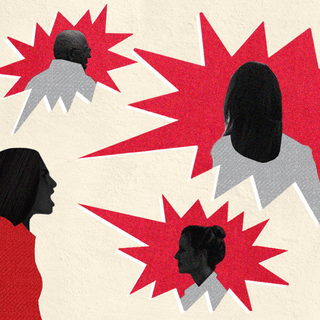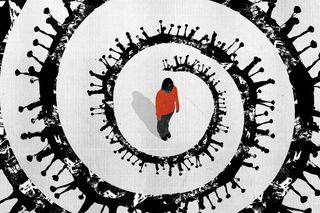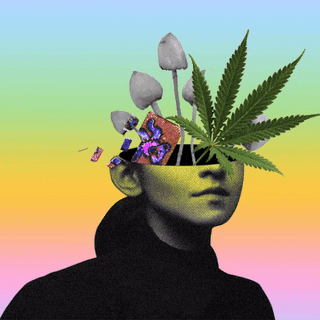
With the Pandemic in an Endless Loop, What Does Closure Mean?
For many seeking respite from life-altering circumstances, the pandemic’s cyclical nature blocks the road to closure.

Sometimes, when news about Covid19 looms large, a memory comes to mind, unbidden. It is of my mother calling out to me, her voice feeble: “The doctors gave up on S*.” This statement — that made me feel like I was dissolving into the air, that made my feet unsteady and my hands shake — comes back to haunt me. S was my cousin, one of the very few I had. S had just turned 19 years old when Covid19 took her.
The shock of it didn’t fade over time; it merely went into hibernation. Often, when Covid is in the news again, I think about how many people have had to hear something similar and feel the same sense of dissolution, of meaning and the world not making any sense, of defamiliarization.
A sudden spike in numbers, then a dip, then another spike, and another mutation. Breakthrough infections, more Covid deaths. A second wave that was devastating beyond comprehension. More lockdowns, more restrictions, masking, sanitizing, the whole routine — they said it was the “new normal.” But nothing about this is normal.
This feeling of not having completed an arc, of being suspended in limbo while trying to process something — of not having closure, in other words — is something that many can resonate with. I was merely a drop in the ocean of people who, for the past two years, had been in constant “flight” mode. And so, when the Omicron variant was announced, the feelings all came back quite naturally. I greeted them like old acquaintances this time, giving up on the hope of ever finding a point in this story where there would be some kind of threshold of healing to cross.
For one: what does it mean to survive, but not know how to carry on?
“I am a survivor of black fungus. I have had three surgeries and had a stroke in between. Disease tends to recur after every surgery and it was painful. The fear of recurrence gave me nightmares for months… the news of the new variant, the environment around us, virus news, virus talks… all these obstruct me from having closure,” says Abhilash, 24. “For me, closure means wrapping up these conditions and resuming my old life.”
Closure is a rather amorphous term. It spans many domains — from the psychological to the legal — but at its core is the idea that human beings need to go through some kind of a process while coping with trauma.
Related on The Swaddle:
When Talking About Death Is Taboo, How Can Grieving People Heal?
“Closure is not completion. It occurs when a person adequately mourns a loss that happened to them, and has made space for themselves in that event,” explains Devika Kapoor, a Mumbai-based psychologist.
Psychologically speaking, closure doesn’t mean that a person will never experience anything related to what happened to them. “Whenever a traumatic event happens, it happens without a person’s knowledge or consent. If a person has made adequate meaning of that event and found some degree of strength, that can sometimes be classified as closure,” Kapoor adds.
But finding meaning is difficult when every moment continues to be a constant reminder of the trauma. The environment, the news, and all the conversations continuing to be centered around the pandemic leaves some people with a feeling of continuity with respect to the traumatic event. As with Abhilash, this can interfere with the traditional mechanisms by which closure is normally achieved.
Which is not to say that there is any one way to achieve closure, because it can look like different things for different people. For some, it can be a definitive act that can begin the process of closure — but enduring pandemic circumstances belie the possibility of this act.
Sathya’s family is in a constant state of turmoil. Her father is violent towards her mother, her brother, and herself. “Closure in an absolute sense would be my mother serving a legal notice to my father,” she says. But the uncertainties associated with the pandemic make this hard. Moreover, the pandemic itself worsened the domestic violence, and Covid19 took away the only supportive family member they had.
With Omicron having reared its head, many acts of closure that can be powerful for rebuilding and restoring one’s sense of self – such as moving out are forestalled before they could even begin. Even on the level of simply planning, the many vast uncertainties of the pandemic are walls that many people hit.
And that is another aspect that complicates closure in the pandemic — grief.
Pooja, 23, lost her best friend to suicide mere weeks before the pandemic reached India and triggered the biggest lockdown in the world. This meant that, contrary to what her psychiatrist advised, she had to be alone in her room, stuck with her own thoughts. “You know how some people are your comfort? My comfort was dead.”
To say that the experience was isolating would be an understatement. She didn’t have other routines to cushion the effects of grief. “In a weird way, I was starting to feel grief for everyone, and putting myself in everyone else’s shoes to process my own grief… The pandemic was like a crash course in dealing with grief and it was all crammed into a span of 3-4 months. It was a really, really bad time in my life.”
When the second wave happened, the deaths overwhelmed her once again. “I thought I knew what grief was, but the grief I felt this time was completely different,” she says. There is no closure to be had from an experience like this, but there were fewer ways of coping and making meaning during such turmoil. As an artist, her ability to make art was hampered too.
There are then the deaths that the ongoing pandemic doesn’t allow people to move on from.
“My dad passed away during Covid from cancer, and the ordeal of keeping him healthy or even happy was something that was not possible… Trying to process my feelings has been a nightmare; I still have night terrors where I start crying,” says Dilini, 24. “It’s also the feeling of being helpless, guilty, angry, alone, and so on that makes it impossible to let go.” The new variant threatening to bring back the status quo that caused such pain gives her much anxiety and also serves as a constant reminder of what she went through.
“It’s not the threat of bringing back lockdowns, but it’s knowing that nobody has changed anything to make the situation better.”
Related on The Swaddle:
What Dilini says speaks to the intertwined relationship between closure and accountability. This is what the concept entails in the legal lexicon, wherein victims of violent crimes or their families are allowed certain things — such as victim impact statements — for the sake of emotional closure. These involve anything from speaking directly to a perpetrator to watching a death sentence being carried out.
“Closure has also come to stand for the constellation of feelings—peace, relief, a sense of justice, the ability to move on—that come with finality,” writes Susan A. Bandes, a legal scholar. Research has shown that closure in the legal context involves knowing the circumstances and the identity of the perpetrator. In other words, it is having answers to the who, what, why questions: Why me? Why did they do it? Who did it? How did they do it? When and what, exactly, went wrong?
With the pandemic, what ravaged the population was an invisible virus. The virus itself didn’t discriminate. But the powers that be, their violent indifference to mass death and decay, their negligence and greed that allowed the pandemic to continue — leading to a situation where we seem to be back to square one — are the ones to blame. But how does one blame entire systems? How can heads of state who tell blatant lies and never answer to the public ever be held to account?
With nobody to look in the eye, nobody to ask questions of — or nobody who will answer truthfully anyway — there is little to do to grapple with the feeling, leaving many helpless and powerless. “This is an ongoing traumatic event and it doesn’t stop — so it doesn’t give us adequate time to process what is happening. And because all of these things are just there somewhere in your memory and body, all of this grief, it has definitely impacted a person’s ability to be okay with whatever has happened to them.” Kapoor explains. “The pandemic has interfered with a person’s ability to feel a sense of closure or consensual endings.”
A sense of collective closure, therefore, may never be within reach. “Although many people have a distinct memory of the beginning of the pandemic, they may not experience a single parallel moment marking the end of it. The break between the Before Times and the present was conspicuous, but the transition from the present to the After Times will likely be more piecemeal and less tidy,” writes Joe Pinkser in The Atlantic.
As an important part of healing, the lack of closure for so many is a mental-health and existential crisis we have not yet reckoned with. But there is some hope. “Closure is not the only thing that defines healing. Certain things, violations can never have closure, and that’s okay,” says Kapoor. How we navigate our path towards healing, or some semblance of it, remains to be seen — but altogether, not impossible. It is this sliver of hope that keeps me going, when there appears to be no end in sight.
Rohitha Naraharisetty is a Senior Associate Editor at The Swaddle. She writes about the intersection of gender, caste, social movements, and pop culture. She can be found on Instagram at @rohitha_97 or on Twitter at @romimacaronii.
Related


What It’s Like To Live With: Sudden Paralysis of the Face
